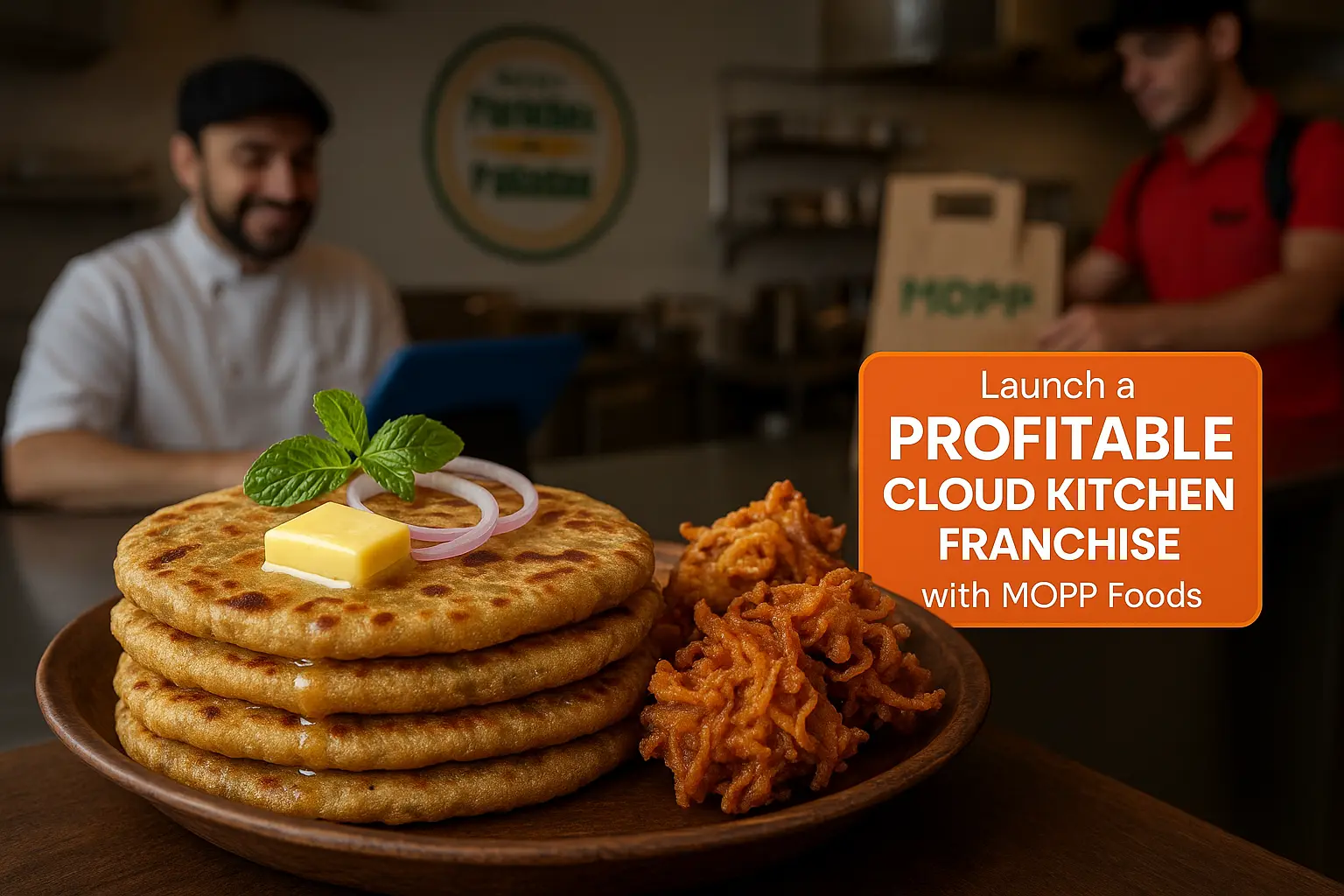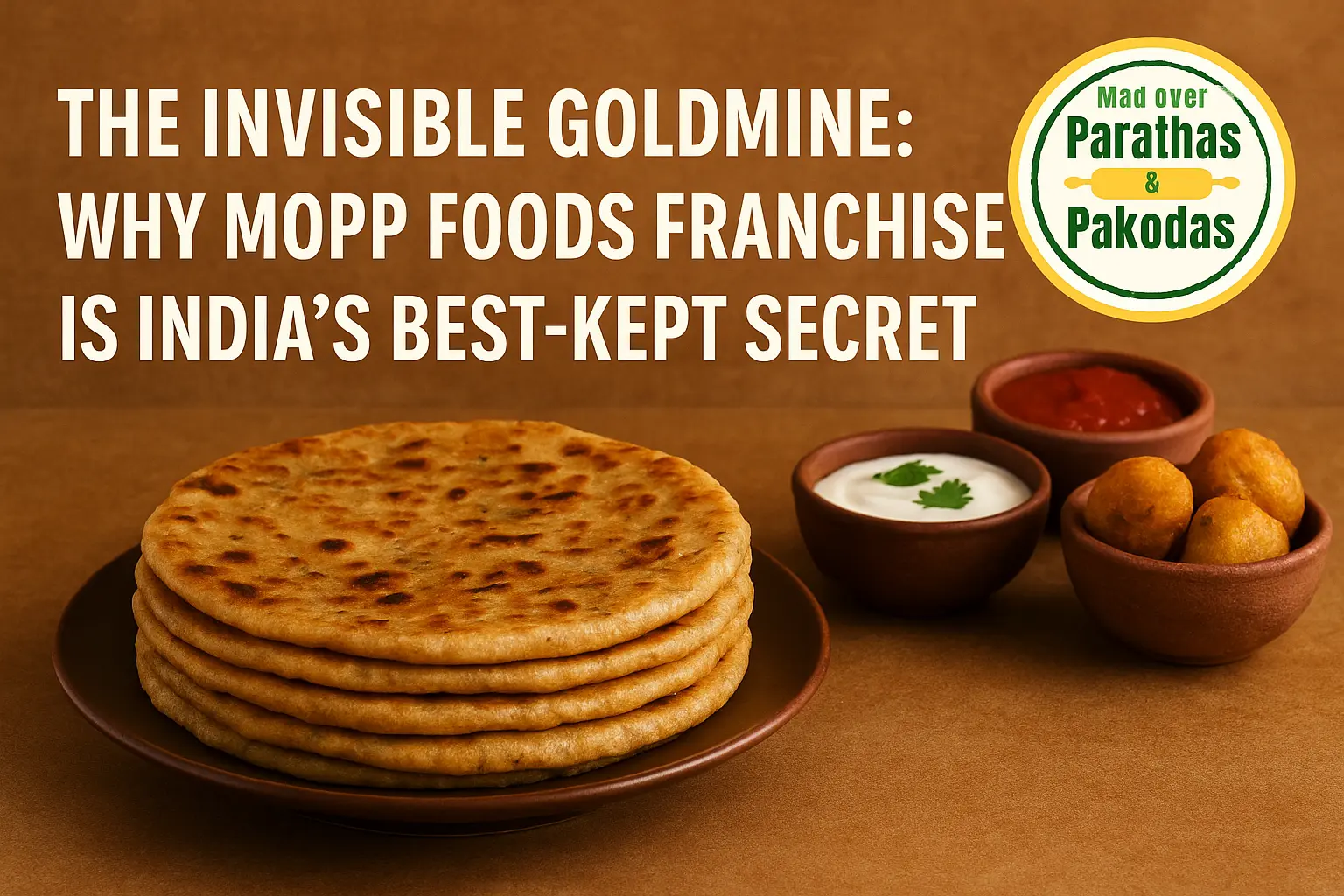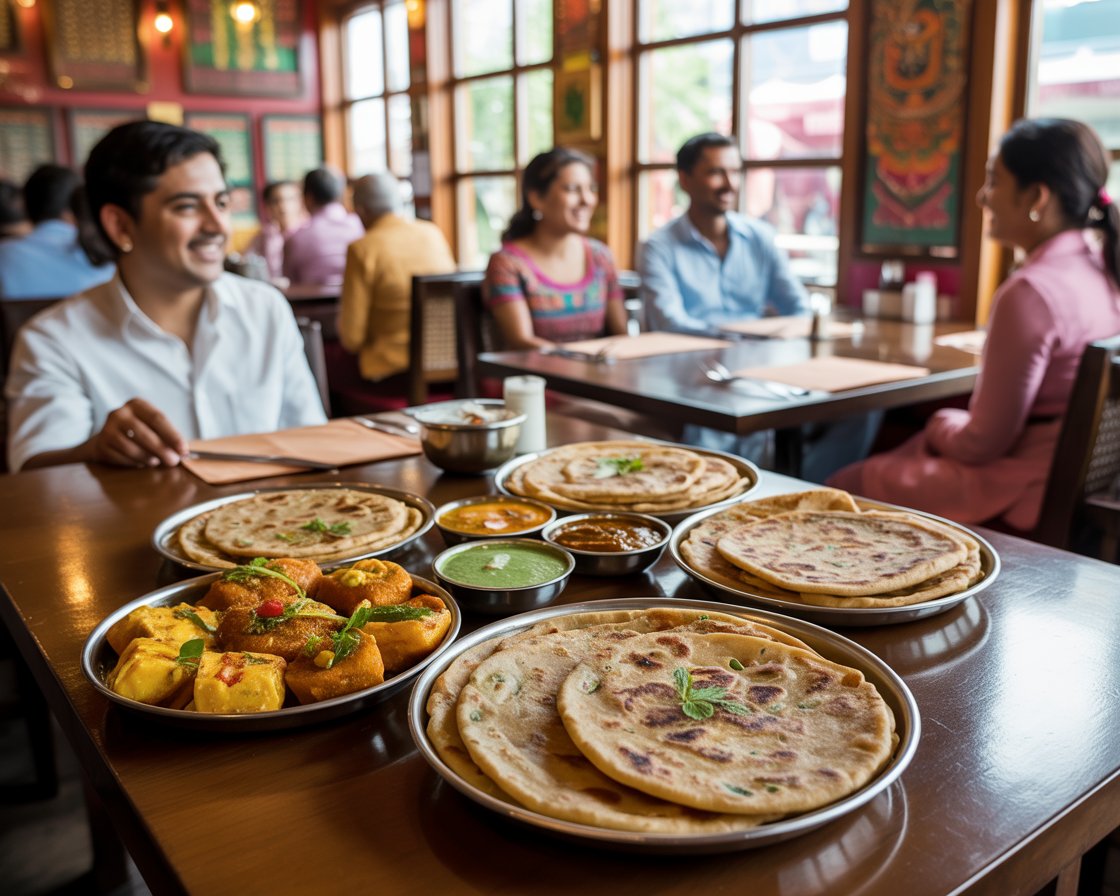MOPP vs Traditional North Indian Eateries: The Special Difference
Introduction to MOPP and Traditional North Indian Eateries
MOPP, short for Mad Over Parathas & Pakodas, is a modern North Indian food franchise that has revolutionized the way people experience North Indian cuisine. With a focus on innovation, convenience, and quality, MOPP has carved a niche in the culinary world. On the other hand, traditional North Indian eateries are deeply rooted in heritage, offering authentic flavors passed down through generations.
While MOPP emphasizes modernity and efficiency, traditional eateries prioritize cultural preservation and authenticity. This article explores the special difference between MOPP and traditional North Indian eateries, highlighting their unique approaches to food and dining.
Both MOPP and traditional eateries cater to the love for North Indian cuisine, but their methods and philosophies differ significantly. Understanding these differences can help food enthusiasts appreciate the evolution of culinary practices.
From ingredient sourcing to cooking techniques, each aspect of these culinary styles reflects their distinct identities. Whether you prefer innovation or heritage, North Indian cuisine offers something for everyone.
As the food industry evolves, the coexistence of modern franchises like MOPP and traditional eateries showcases the dynamic nature of North Indian cuisine. This article delves into the nuances that set them apart.
Let’s explore the culinary philosophy, ingredient sourcing, cooking techniques, dining experience, menu diversity, health aspects, and future trends of MOPP and traditional North Indian eateries.
Culinary Philosophy: Modern vs Traditional Approaches
MOPP’s culinary philosophy revolves around innovation and convenience. By leveraging technology and modern cooking methods, MOPP ensures consistency and efficiency in delivering high-quality meals. Their focus is on creating a seamless experience for customers, from online ordering to doorstep delivery.
Traditional North Indian eateries, however, emphasize preserving age-old recipes and cooking techniques. Their philosophy is deeply rooted in cultural heritage, offering dishes that reflect the rich history of North Indian cuisine.
While MOPP experiments with fusion dishes and modern flavors, traditional eateries stick to classic recipes that have stood the test of time. This difference in approach highlights the evolution of culinary practices in North India.
For example, MOPP might offer a butter chicken wrap for on-the-go convenience, whereas a traditional eatery would serve butter chicken with naan in a sit-down setting. Both approaches cater to different customer needs.
The modern philosophy of MOPP appeals to younger generations seeking quick and innovative meals, while traditional eateries attract those who value authenticity and cultural connection.
Ultimately, the choice between modern and traditional approaches depends on individual preferences and lifestyle. Both contribute to the diverse landscape of North Indian cuisine.
Ingredient Sourcing: Freshness and Authenticity
MOPP prioritizes sourcing fresh and high-quality ingredients to ensure the best taste and nutritional value. Their supply chain is optimized for efficiency, allowing them to maintain consistency across all outlets.
Traditional North Indian eateries often rely on local markets and seasonal produce, emphasizing authenticity and regional flavors. This approach reflects their commitment to preserving the essence of North Indian cuisine.
For instance, MOPP might use standardized ingredients for their dishes to ensure uniformity, while traditional eateries might adapt recipes based on locally available produce.
Both approaches have their merits. MOPP’s focus on freshness and quality appeals to health-conscious customers, while traditional eateries’ emphasis on authenticity resonates with those seeking genuine flavors.
Ingredient sourcing plays a crucial role in defining the taste and quality of dishes. Whether it’s MOPP’s modern supply chain or traditional eateries’ local sourcing, both contribute to the richness of North Indian cuisine.
By understanding the importance of ingredient sourcing, customers can make informed choices about where to dine based on their preferences for freshness or authenticity.
Cooking Techniques: Innovation vs Heritage
MOPP employs innovative cooking techniques to create unique dishes that cater to modern tastes. Their use of technology and standardized processes ensures consistency and efficiency.
Traditional North Indian eateries rely on heritage cooking methods, such as slow cooking and clay oven baking, to bring out the authentic flavors of their dishes. These techniques have been passed down through generations.
For example, MOPP might use sous-vide cooking for precise temperature control, while traditional eateries might use a tandoor for smoky flavors. Both techniques have their own charm.
The innovation of MOPP appeals to adventurous eaters looking for new experiences, while the heritage of traditional eateries attracts those who value authenticity and tradition.
Cooking techniques are a reflection of culinary philosophy. MOPP’s modern methods showcase their commitment to innovation, while traditional eateries’ heritage techniques highlight their dedication to cultural preservation.
By exploring these techniques, customers can appreciate the diversity of North Indian cuisine and choose dining options that align with their preferences.
Dining Experience: Ambiance and Presentation
MOPP focuses on convenience and modern presentation, offering meals that are visually appealing and easy to consume. Their packaging is designed for portability and aesthetic appeal.
Traditional North Indian eateries provide a more immersive dining experience, with elaborate decor and table service that reflect the cultural richness of North India.
For instance, MOPP might serve a meal in eco-friendly packaging for takeaway, while a traditional eatery might present the same dish on a brass plate with intricate designs.
The ambiance of traditional eateries transports diners to a bygone era, while MOPP’s modern approach caters to the fast-paced lifestyle of today’s customers.
Both dining experiences have their own charm. MOPP’s focus on convenience appeals to busy individuals, while traditional eateries’ emphasis on ambiance attracts those seeking a cultural connection.
By understanding the differences in dining experiences, customers can choose options that align with their preferences for convenience or cultural immersion.
Menu Diversity: Fusion vs Classic Dishes
MOPP offers a diverse menu that includes fusion dishes and modern interpretations of North Indian classics. Their creativity in menu design caters to a wide range of tastes.
Traditional North Indian eateries stick to classic recipes that have been perfected over generations. Their menu reflects the rich heritage of North Indian cuisine.
For example, MOPP might offer a paneer tikka pizza as a fusion dish, while a traditional eatery would serve paneer tikka in its original form. Both options cater to different customer preferences.
The diversity of MOPP’s menu appeals to adventurous eaters, while the authenticity of traditional eateries’ menu attracts those seeking genuine flavors.
Menu diversity is a reflection of culinary philosophy. MOPP’s fusion dishes showcase their commitment to innovation, while traditional eateries’ classic recipes highlight their dedication to cultural preservation.
By exploring menu options, customers can appreciate the variety of North Indian cuisine and choose dishes that align with their tastes.
Health and Nutrition: A Comparative Perspective
MOPP prioritizes health and nutrition by using fresh ingredients and modern cooking techniques that retain nutritional value. Their focus on quality appeals to health-conscious customers.
Traditional North Indian eateries emphasize rich flavors and hearty meals, often using ghee and spices that are integral to North Indian cuisine. While delicious, these dishes may be calorie-dense.
For instance, MOPP might offer a low-calorie version of butter chicken, while a traditional eatery would serve the dish in its original form. Both options cater to different dietary preferences.
The health-conscious approach of MOPP appeals to younger generations, while the indulgent flavors of traditional eateries attract those seeking comfort food.
Health and nutrition are important considerations when choosing where to dine. MOPP’s focus on quality and nutrition aligns with modern dietary trends, while traditional eateries’ emphasis on flavor reflects cultural heritage.
By understanding the health aspects of North Indian cuisine, customers can make informed choices about their meals based on their dietary needs and preferences.
The Future of North Indian Cuisine: Bridging Tradition and Modernity
The coexistence of MOPP and traditional North Indian eateries showcases the dynamic nature of North Indian cuisine. Both approaches contribute to the evolution of culinary practices.
As the food industry evolves, there is potential for collaboration between modern franchises like MOPP and traditional eateries. By combining innovation with heritage, North Indian cuisine can reach new heights.
For example, MOPP could incorporate traditional cooking techniques into their menu, while traditional eateries could experiment with fusion dishes to attract younger customers.
The future of North Indian cuisine lies in bridging tradition and modernity. By embracing both approaches, the culinary world can offer diverse options that cater to all tastes.
Whether it’s MOPP’s focus on innovation or traditional eateries’ emphasis on authenticity, both contribute to the richness of North Indian cuisine. The key is to find a balance between the two.
By understanding the evolution of North Indian cuisine, customers can appreciate the diversity of culinary practices and choose dining options that align with their preferences.
Conclusion
In conclusion, the special difference between MOPP and traditional North Indian eateries lies in their culinary philosophy, ingredient sourcing, cooking techniques, dining experience, menu diversity, and health aspects. Both approaches contribute to the richness of North Indian cuisine.
MOPP’s focus on innovation and convenience appeals to modern customers, while traditional eateries’ emphasis on authenticity and heritage attracts those seeking cultural connection. By understanding these differences, customers can make informed choices about where to dine.
The future of North Indian cuisine lies in bridging tradition and modernity. By embracing both approaches, the culinary world can offer diverse options that cater to all tastes.
Explore the world of North Indian cuisine with MOPP, a modern food franchise that combines innovation with quality. Visit MOPP Foods to learn more about their offerings and experience the special difference.
FAQ
- What is MOPP?
- MOPP stands for Mad Over Parathas & Pakodas a modern North Indian food franchise that focuses on innovation, convenience, and quality.
- How does MOPP differ from traditional North Indian eateries?
- MOPP emphasizes modern cooking techniques, fusion dishes, and convenience, while traditional eateries prioritize authenticity, heritage recipes, and cultural immersion.
- What are the health benefits of dining at MOPP?
- MOPP uses fresh ingredients and modern cooking techniques to retain nutritional value, appealing to health-conscious customers.
- Can traditional North Indian eateries offer fusion dishes?
- While traditional eateries typically stick to classic recipes, some are beginning to experiment with fusion dishes to attract younger customers.
- Where can I learn more about MOPP?
- Visit MOPP Foods to explore their menu and learn more about their innovative approach to North Indian cuisine.




